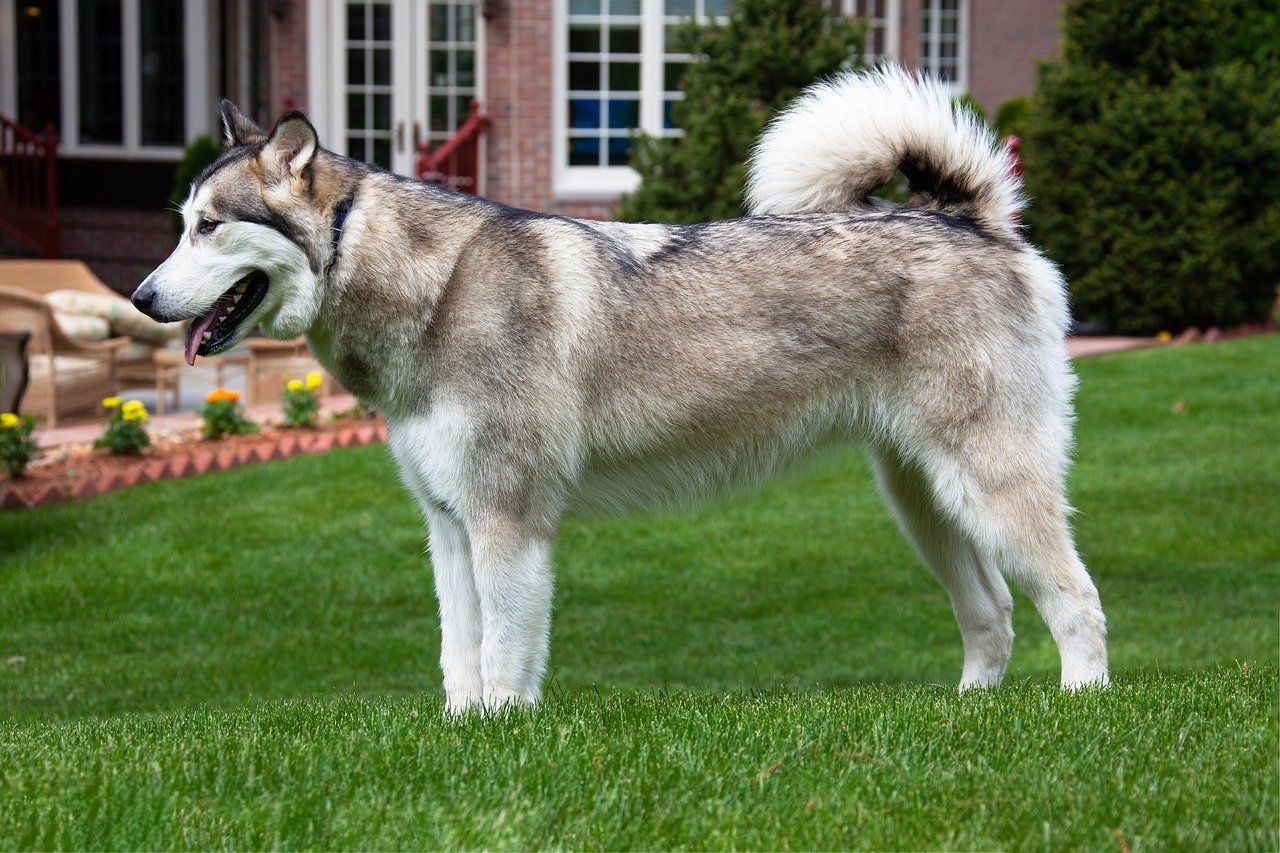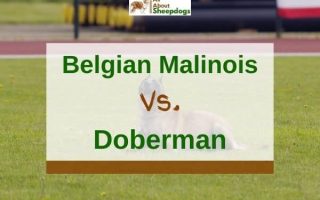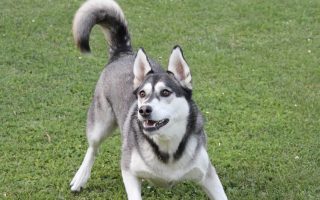As a result of similar and shared behavioral traits and characteristics, as well as their appearance and temperament, some people might mistaken the Belgian Malinois for the German Shepherd dog.
They do have many resemblances. There are, however, many things that set them apart from each other.
Not only does this include certain differences in temperament, but as well as that, they have a few differences in their coat, build, weight, and size.
The Belgian Malinois may also be mistaken for other breeds, especially for other Belgian Shepherd dog varieties.
A Belgian Malinois may also have been crossed with other breeds of dog.
So, how can owners tell if their Belgian Malinois is purebred? Continue reading to find out!
[wpsm_toplist]
How Can I Tell If My Belgian Malinois Is Purebred?
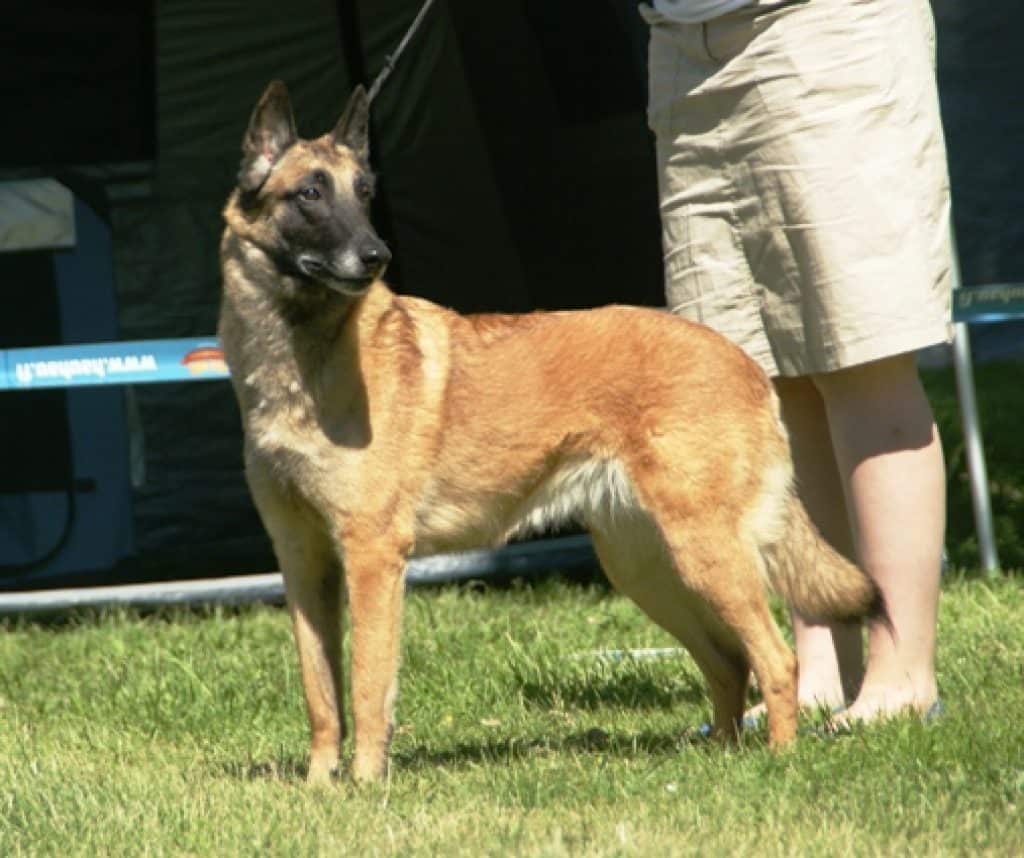
To be able to identify whether your Belgian Malinois is purebred or not, we can take a look at the original American Kennel Club (AKC) standard of the breed.
By comparing your Belgian Malinois to the original standard, we will be able to see if the markings, body measurements, weight, build, and appearance characteristics it has match precisely those of the breed’s set standards.
Characteristics That Belgian Malinois Is Purebred
One of the most important and critical characteristics which help determine whether your Belgian Malinois is purebred is their markings.
This dog will usually always have a black mask, black ears – at least the majority of them – and a black or darker tip on the end of their tail.
If any of these signature black markings are missing on a Belgian Malinois, it will indicate that it is not a purebred dog.
Characteristics That Belgian Malinois Is Not Purebred
Certain characteristics which may indicate that your Belgian Malinois is not a purebred include if their coat color is a washed-out fawn.
Another coat color which would indicate that they are not a Belgian Malinois is if they have brindle markings.
This would mean that your dog is a Dutch Shepherd instead, not a Belgian Malinois.
Even though a small white spot on the breast bone and white-tipped toes are permitted, if your Belgian Malinois dog has white markings on other parts of the body, it will mean it is not a purebred.
Other Visible Characteristics That Belgian Malinois Should Have
Other visible characteristics that a Belgian Malinois should possess include:
A finely chiseled head, medium-sized, chocolate almond shaped eyes, stiff, erect, triangular ears, and round, well-padded paws.
These dogs have a fine, pointed muzzle, of a medium length, approximately of equal length to the top of the skull, and it tapers gradually to the nose.
The outer coat of the Belgian Malinois is straight, short, and firm in texture, and it has a dense underside. The hairs of their fur feel quite hard to the touch.
The color of their coat varies, ranging from a lighter sand or yellowish color to a darker mahogany, red, brown or fawn shade.
The ends of a Belgian Malinois dog’s hairs are black-tipped, giving it a black overlay. On the head and back, their hair is darker than on the underside.
Their fur is short on areas of the body such as the head, ears, lower parts of their legs, whereas on their thighs, tail, ears, and neck it is thicker.
The hairs around the neck resemble a ridge.
Body, Weight, And Height Of Belgian Malinois
The body of the Belgian Malinois is medium-sized, and they have a lean, agile yet powerful and well-muscled build.
The weight of the male Belgian Malinois ranges from 60 to 80 pounds (27 to 36 kg), whereas a female will weigh 40 to 60 pounds (18 to 27 kg).
As for the height measurements of the Belgian Malinois dog, the male stands at 24 to 26 inches (which is 61 to 66cm) at the shoulder; whereas the female stands at 22 to 24 inches (56 to 61 cm) at shoulder height.
The purebred Belgian Malinois will also display behavioral traits which separate them out among other dogs.
They are active, protective, alert, hard-working, watchful, and wary dogs.
What Breeds Make Up A Belgian Malinois?
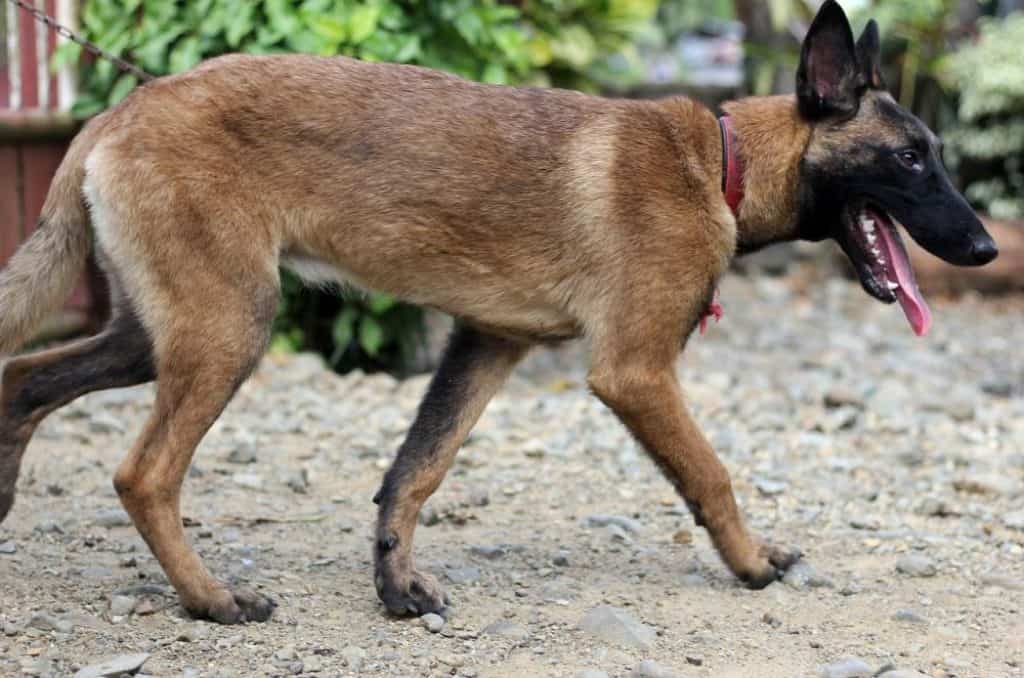
The Belgian Malinois descends from a type of Shepherd dog bred in Belgium in the 1800’s to herd sheep.
From that Belgian Shepherd dog, different varieties of the Belgian Shepherd emerged, including the Belgian Malinois, the Belgian Tervuren, the Belgian Laekenois, and the Belgian Groenendael.
All these breeds are closely related, and are even considered as the same breed in some countries.
However, each variety of the Belgian Malinois has different characteristics that separate them from each other.
They have different coat lengths, patterns, and features.
The Belgian Malinois was first brought to America in the 1911, where they were used in the military during World War I and World War II for their service.
It was only in 1959 that the Belgian Malinois became recognized by the American Kennel Club as a separate breed than the other Belgian Shepherd varieties.
Now Belgian Malinois dogs are used and valued all over the world for their traits and attributes.
Belgian Malinois vs German Shepherd – How To Tell The Difference?
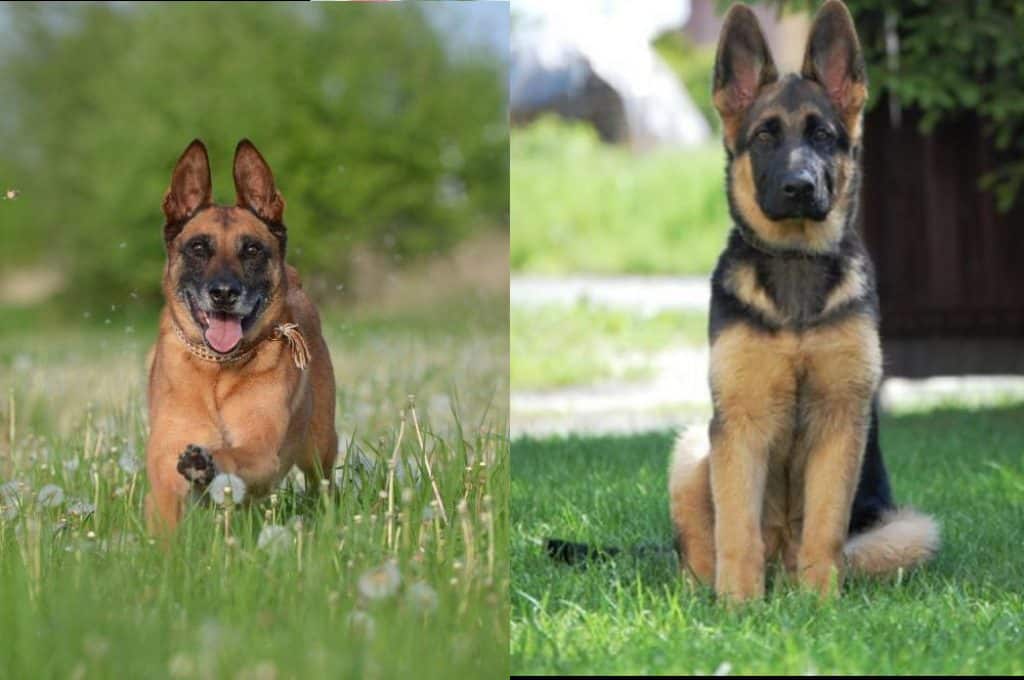
Appearance
The first difference between a German Shepherd dog and a Belgian Malinois is their size.
A German Shepherd will be a ten percent larger than a Belgian Malinois.
Even though the height measurements of both breeds are very similar, the German Shepherd will weigh more than the Belgian Malinois.
Whilst the Belgian Malinois weighs from around 60 to 80 pounds, and the female weighs 40 to 60 pounds, the German Shepherd dog can weigh up to 90 pounds, and the female can weigh up to 70 pounds.
Therefore, the German Shepherd is heavier than the Belgian Malinois.
Apart from that, there are significant differences in the coat of the German Shepherd and that of the Belgian Malinois.
The German Shepherd has a coat of a medium length, while the long-haired German Shepherd, as the name suggests, has a longer coat.
The Belgian Malinois, on the other hand, always has short hair on the majority of their body, especially the face, body, and on their ears and lower legs.
The build of the Belgian Malinois is also slender and appears more athletic, and it is well-balanced and well-proportioned with a square body profile.
German Shepherds usually are more heavy-boned, and have a sloping back with angulated hind legs.
Although they may be very similar in markings and coat color, Belgian Malinois come in a slightly wider range of different shades such as sand, fawn, tan, brown, mahogany, or red, with a black overlay, black ears, black mask, and dark or black tip on their tail.
German Shepherds, aside from the black-colored variety, are most often always tan with a black saddle and black mask.
Temperament
As for the temperament, the Belgian Malinois and the German Shepherd have some very similar behavioral traits and characteristics.
Both are active dogs, as well as intelligent, protective, watchful, alert, trainable, and willing to work.
However, Belgian Malinois tend to be more aggressive. Usually they will show more hostility toward strangers and unknown people.
Belgian Malinois dogs are also a bit more active and energetic, and, as a result of their lighter, slimmer frame, they are faster than the German Shepherd.
German Shepherds, on the other hand, prove to be stronger and more powerful as a result of their mightier builds.
How Much Does A Belgian Malinois Cost?
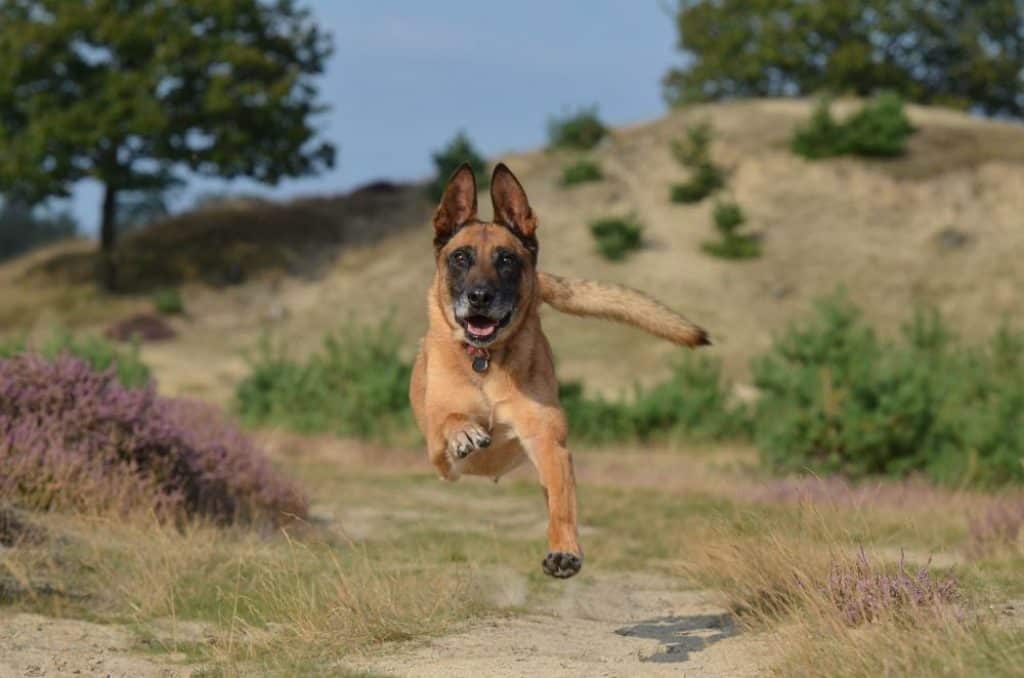
A Belgian Malinois puppy costs up to $2500, while a show quality Belgian Malinois puppy, especially from a show winning lineage, will cost up to $3000.
Some breeders also ask for a deposit of $500 when a person is buying a puppy from them. Often, a female
Belgian Malinois will cost a little more than a male, because of the fact that they can produce offspring.
If adopting from a rescue center, an adult Belgian Malinois will cost around $350, although prices may vary with age, or the place you are getting your Belgian Malinois from.
However, a fully trained protection working Belgian Malinois costs much more.
Most dogs will cost around $30,000, some being cheaper and some more expensive depending on the quality of protection they have been trained to offer.
Conclusion
In conclusion, how can I tell if my Belgian Malinois is purebred?
There are many characteristics which will help us determine if our Belgian Malinois is a purebred, but the most common characteristics include their well-proportioned square body, their lean, athletic build, short hair, and erect, triangular ears.
Their color will range from a lighter tan to a darker fawn, brown, mahogany, or red color, but never a washed-out fawn.
The hairs on their body will have black tips. Their markings will always include black ears, a black mask on the face, and a black or dark tip on the tail.
These dogs also have features which set them apart from other Belgian Shepherd dogs.
These other Belgian Shepherd dogs are closely related to the Malinois, and share the same common ancestor Shepherd dog from Belgium, which made the development of these breeds possible.
However, all these types of Belgian Shepherd are somewhat slightly different in both appearance, size, and personality.

